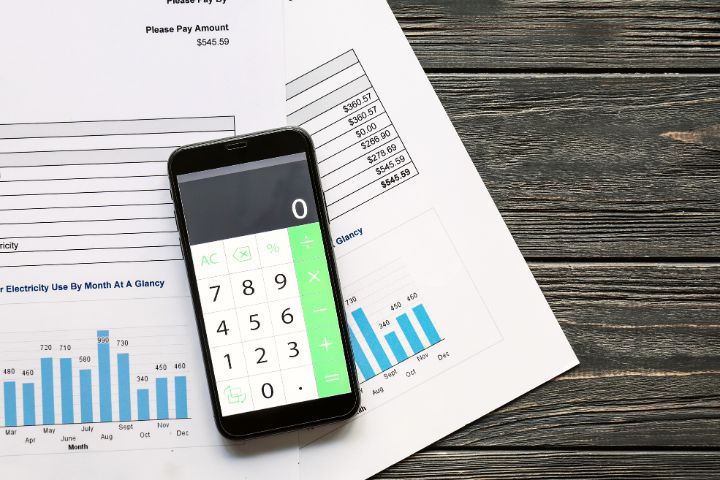Your Ultimate Guide to Best Community Solar (+ Best & Worst US Programs)
Unlike personal solar panel installations that sit atop your roof, or vast solar farms dotting rural landscapes, community solar is something completely different.
It’s all about shared systems, where sunshine benefits not just one, but an entire community. I know it sounds like utopian Sci-Fi but stay with me. I’ll guide you through everything you need to know about community solar, tips and tricks, and how to deal with the most common challenges.
What is Community Solar?
The concept of community solar lies in the innovative approach of letting multiple people tap into a single solar power project.
It’s ideal for those who can’t or prefer not to, install solar panels directly on their property. If you’ve ever seen a large solar panel setup, maybe in an open field or on a spacious rooftop – this is your community solar project. And you, along with your neighbors, can subscribe to it.
Now, I know what you might be thinking. How’s leasing solar panels anything different from community solar?
Leasing panels typically means they’re installed on your property, and you pay a fixed monthly fee. Community solar, on the other hand, doesn’t demand any rooftop real estate from you. Instead, you subscribe to a portion of the solar power generated, often leading to lower electricity bills and a smaller carbon footprint.

It’s like having your own solar panels but without worrying about installation, maintenance, or whether your roof faces the right way.
Plus, besides making solar power more accessible, it strengthens community bonds. Together with other subscribers, you support renewable energy, contribute to local job creation, and step towards a more sustainable future.
Sounds like an eco-win-win for everybody!
9 Top Community Solar Programs Across the U.S.
Ready to play a find-the-community-solar-program-in-your-state game? Here’s a quick overview of the best community solar programs. Yours is just to find your state and speed-dial their number.
- California – Brightbox by Sunrun – Known for its cutting-edge technology, Brightbox offers a community solar plus storage solution, ensuring you have power even when the whole grid goes down.
- New York – Nexamp – With a strong presence in New York, Nexamp makes joining a community solar program straightforward, offering savings with no upfront costs.
- Minnesota – Cooperative Energy Futures – This member-owned cooperative is all about local power, offering Minnesotans a chance to actively participate in their energy choices.
- Colorado – SunShare Community Solar – No-commitment, pay-as-you-go option, making it easy to join and leave the program whenever you feel like it.
- Massachusetts – BlueWave Solar – With a focus on both community solar and sustainable development, BlueWave offers an integrated approach to solar energy with its comprehensive service.
- Illinois – Trajectory Energy Partners – Creating partnerships that bring community solar to diverse communities is something they are pros at, including schools and nonprofits.
- Maryland – Neighborhood Sun – They’re most famous for their strong customer-centric approach and service, having a strong commitment to making solar affordable for all income levels.
- New Jersey – Community Energy – With years of experience, Community Energy is your trusted neighborhood provider for New Jersey residents looking to join the community solar movement.
- Texas – Octopus Energy – You better watch out! As a newer player in the Texas energy market, Octopus Energy is rapidly expanding access to community solar in the Lone Star State.

Solar Pros & Cons: A Balanced View of Community Solar Providers
Navigating on your own the whole community solar field is like backpacking through the Sahara desert. You’re bound to get burned (pun intended) along the way.
Let’s skip going through the TrustPilot reviews. Instead, let’s uncover straight away several dominant community solar companies in the field.
SunShare Community Solar
Pro – A trailblazer from Denver, Colorado in the community solar sector, SunShare boasts extensive experience and a large portfolio of projects. They offer flexible contracts with zero to little upfront costs, making solar access easier for more people.
Con – They are limited to specific states, and I’ve heard their customer service is not that stellar, but that could be coming from envious neighbors trying to tarnish their reputation.
CleanChoice Energy
Pro – Known for its commitment to 100% renewable energy, CleanChoice offers an easy sign-up process and transparent billing – a feature you’ll fall in love with! Their focus on environmental impact is a big plus if you’re their future eco-conscious subscriber.
Con – They are a bit pricier than your usual hood community solar. And like SunShare, they’re limited to certain areas.

Solstice Community Solar
Pro – Their Solar Savings program is a breath of fresh air in the community solar as an innovation, designed to make solar more affordable for low-to-moderate-income households. They also have a strong community-focused approach.
Con – As a venture that’s still developing, their projects are not available everywhere yet.
Cooperative Community Energy
Pro – Don’t let their name fool you, ’cause they are experts in building strong local community bonds and educating their users about Community Solar 101. With their co-op model, all benefits are shared among members.
Con – Limited to specific regions, and their project scale is smaller compared to larger national providers.
Nexamp
Pro – It’s like next + camp = Nexcamp, get it?! Anyway, when you mention their name in the community solar industry, one thought comes to mind – a diverse portfolio with both community and commercial solar services offered in one umbrella package. Plus, they have a robust customer portal for easy management of subscriptions.
Con – Because of their numerous services, note that you could experience some delays in project development and go deaf with communication during these periods.
How to Find the Best Community Solar Deals in Your Area

Finding the best community solar deals in your area feels like sifting for gold in the river of renewable energy. You might find something or you might leave empty-handed. But don’t worry, I’ll share my guidelines with you so you strike a pan full of golden nuggets every time!
- Understand the pricing structure. Community solar offers significant savings, but it’s crucial to understand the pricing. Look for clear, straightforward pricing without hidden fees. Some programs offer fixed rates, while others have variable rates based on actual energy production. With those, don’t feel afraid to sit at the negotiation table.
- Compare the savings estimates. Most community solar programs promise a reduction in your electricity bill. Compare these estimates with your current energy costs. Remember, the best deal isn’t always the cheapest upfront. It’s more about those long-term savings, rather than rattling chunk-change.
- Evaluate the contract terms. Length of contract, cancellation policies, and what happens if you move are key factors. Look for flexibility and transparency. A great deal today might not be so great if you’re locked in for too long.
- Assess the environmental impact. If going green is your main goal, evaluate the environmental benefits of each program. How much CO2 emissions will you be offsetting? The best places for community solar often prioritize environmental impact alongside cost savings. Kinda reaching a silver lining between those two worlds.
- Check for local or state incentives. Some areas offer additional incentives for joining a community solar program. This could be the deal breaker between choosing one deal over another, so do your local homework! Do it with the aim of scoring A++.
- Research their reputation and reviews. What are other subscribers saying? What are their experiences? What was their share of the community solar contract like? A deal might look good on paper, but customer experiences reveal a lot about the actual value and reliability of the service.
- Availability in your area. Start with a simple search like “What’s the best community solar deal in [my area]” or “Best community solar in [my state].”
What to Avoid: Lessons from Less Successful Programs

It’s time to look at the other side of community solar – a place where not all that glitters is gold.
Project delays and mismanagement have been a thorn in the side of some community solar programs. Projects in certain “closed” states can easily hit a wall due to permitting issues, grinding to a halt, and highlighting the need for efficient management and setting realistic timelines.
Financial viability is another critical aspect. Sustainability isn’t just environmental! The economic side takes a big portion of it too. There have been instances where the financial underpinning of community solar projects proved shaky, impacting their long-term success. This underlines the importance of robust financial planning and creating realistic subscriber models.
Then there’s the issue of limited consumer benefits. Not all community solar programs offer significant savings, making some less appealing than others. In some states, subscribers found the savings so minimal that the program struggled to gain traction. A death sentence to most of the community solar projects out there!
Complexity in subscription models is also a deterrent. When programs come with complicated pricing structures or contracts, they confuse the hell out of potential subscribers and repel them away like a mosquito repeller. Simplicity and clarity are two virtues vital for the success of ANY community solar initiatives.
Accessibility, or the lack thereof, has also been a stumbling block. Some programs have been critiqued for not being inclusive, whether due to high credit score requirements or limited geographical availability. This limits the community solar’s general reach and impact. Lastly, the level of government support makes or breaks community solar initiatives. In regions where policies are unclear or support is lacking, the growth of community solar has been stifled.
So, even when Uncle Sam goes all green on the solar front if it doesn’t have a concrete policy framework, it becomes just another solar PR scandal.
Tax Incentives in Community Solar

Tax incentives for community solar are a peculiar thing.
You see, as a community solar subscriber, you don’t get the direct benefit of federal tax credits that homeowners with personal solar panels enjoy.
Rather, your benefits come in an indirect way through lower subscription costs or electricity rates. In some states, additional local incentives or rebates may apply to community solar subscribers. These incentives further reduce your cost of subscribing to a community solar project, but you need to put your Sherlock Holmes hat on and do your own due diligence.
Community Solar Tax Example
A community solar project is set up at a cost of $1 million. The developer can claim a 26% ITC (Federal Investment Tax Credit), which equates to a $260,000 tax credit. That’s a lot of money!
This reduction in the project’s net cost enables the developer to offer more competitive pricing to subscribers, effectively lowering the cost for individuals who join the community solar program. So, when a community solar project developer installs a new solar array, they claim the ITC for the cost of installation.
This substantial tax benefit often crushes the starting prices to a level that’s affordable for the average Joe to participate. The developer then passes these savings on to community solar subscribers in the form of lower subscription rates or credits on their electricity bills.
And voila – you have your community solar project up and successfully running!
The Wrap-up
So next time you come across a poster saying “Join the community solar today, join the revolution!”, know that’s not just another hippy hype. It’s an actual working solar panel concept, with a functioning model to supply your home with electricity that’s really green.






